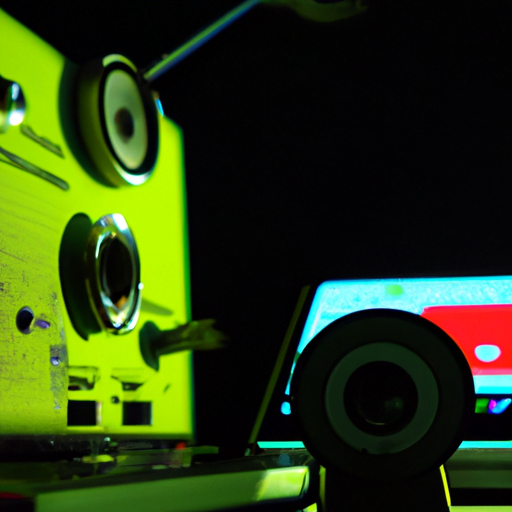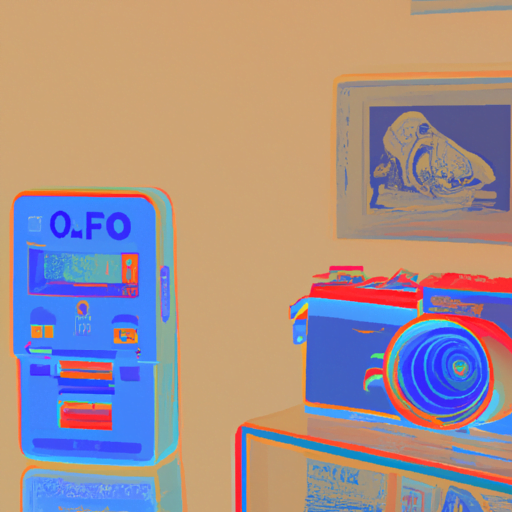
-
Table of Contents
Exploring Cyberpunk Aesthetics in Design

Cyberpunk aesthetics have become increasingly popular in design, influencing various industries such as fashion, film, and graphic design. This futuristic and dystopian style has captivated audiences with its unique blend of technology, urban decay, and rebellious spirit. In this article, we will delve into the world of cyberpunk aesthetics, exploring its origins, key elements, and its impact on contemporary design.
The Origins of Cyberpunk Aesthetics
The term “cyberpunk” was coined by science fiction author Bruce Bethke in his 1980 short story of the same name. However, the cyberpunk movement truly gained momentum in the 1980s and 1990s with the publication of influential novels such as William Gibson’s “Neuromancer” and movies like Ridley Scott’s “Blade Runner.” These works depicted a future where advanced technology coexisted with social and economic decay, creating a gritty and dystopian atmosphere.
Cyberpunk aesthetics draw inspiration from various sources, including film noir, Japanese culture, and the punk subculture. The fusion of these influences creates a distinct visual style characterized by neon lights, rain-soaked streets, and a sense of urban claustrophobia. The genre often explores themes of corporate control, artificial intelligence, and the blurring of boundaries between humans and machines.
Key Elements of Cyberpunk Aesthetics
There are several key elements that define cyberpunk aesthetics:
- Neon Lights: Neon lights are a prominent feature of cyberpunk design, casting a vibrant glow on the dark and gritty cityscapes. They create a sense of futuristic energy and serve as a visual representation of the clash between technology and decay.
- Dystopian Cityscapes: Cyberpunk often portrays sprawling, overcrowded cities plagued by pollution, poverty, and crime. These dystopian cityscapes reflect the dark underbelly of technological advancement and the consequences of unchecked corporate power.
- Cybernetic Enhancements: In the cyberpunk world, humans often augment their bodies with cybernetic enhancements, blurring the line between man and machine. These enhancements can range from simple implants to full-body modifications, reflecting society’s obsession with merging with technology.
- Hacker Culture: Cyberpunk aesthetics are closely associated with hacker culture, where individuals rebel against oppressive systems and use their technological skills to expose corruption. This element adds a sense of rebellion and anti-establishment sentiment to the overall aesthetic.
- High-Tech Low-Life: The cyberpunk genre often explores the dichotomy between advanced technology and societal decay. It presents a world where high-tech gadgets and virtual realities coexist with poverty and social inequality.
Cyberpunk Aesthetics in Design
The influence of cyberpunk aesthetics can be seen in various design disciplines:
Fashion
Cyberpunk fashion embraces a futuristic and edgy style, often incorporating elements such as leather, metallic accents, and neon colors. Designers like Alexander McQueen and Thierry Mugler have drawn inspiration from cyberpunk aesthetics, creating avant-garde collections that reflect the genre’s rebellious spirit.
Graphic Design
Cyberpunk aesthetics have heavily influenced graphic design, particularly in the realm of album covers, movie posters, and video game art. The use of neon colors, glitch effects, and futuristic typography creates visually striking designs that evoke the cyberpunk atmosphere.
Product Design
Product designers have also embraced cyberpunk aesthetics, incorporating elements such as neon lighting, sleek lines, and metallic finishes into their creations. Companies like Razer and Tesla have adopted cyberpunk-inspired designs for their gaming peripherals and electric vehicles, respectively.
Case Studies
Let’s explore a few case studies that highlight the impact of cyberpunk aesthetics in design:
Blade Runner 2049
The 2017 film “Blade Runner 2049” is a prime example of cyberpunk aesthetics in cinema. The movie’s visual style, characterized by rain-soaked streets, neon-lit cityscapes, and futuristic technology, garnered critical acclaim and influenced numerous designers and artists.
Cyberpunk 2077
The highly anticipated video game “Cyberpunk 2077” is set in a dystopian future where players navigate a sprawling city filled with cybernetically enhanced individuals and high-tech gadgets. The game’s promotional material and concept art showcase the iconic cyberpunk aesthetic, generating significant excitement among fans.
The Impact of Cyberpunk Aesthetics
Cyberpunk aesthetics have had a profound impact on contemporary design, shaping the way we perceive and interact with technology. Here are some key takeaways:
- Cyberpunk aesthetics have inspired designers to push boundaries and explore unconventional design choices.
- The fusion of technology and decay in cyberpunk aesthetics serves as a cautionary tale, reminding us of the potential consequences of unchecked technological advancement.
- Cyberpunk aesthetics have influenced popular culture, with movies, video games, and fashion collections drawing inspiration from the genre.
- The rebellious and anti-establishment nature of cyberpunk aesthetics resonates with individuals seeking to challenge societal norms and question authority.
Conclusion
Cyberpunk aesthetics have become a powerful force in design, captivating audiences with their futuristic and dystopian allure. The genre’s origins in science fiction literature and its subsequent influence on various design disciplines have shaped contemporary visual culture. By embracing cyberpunk aesthetics, designers can tap into a rich visual language that explores the complex relationship between technology, society, and the human condition.
